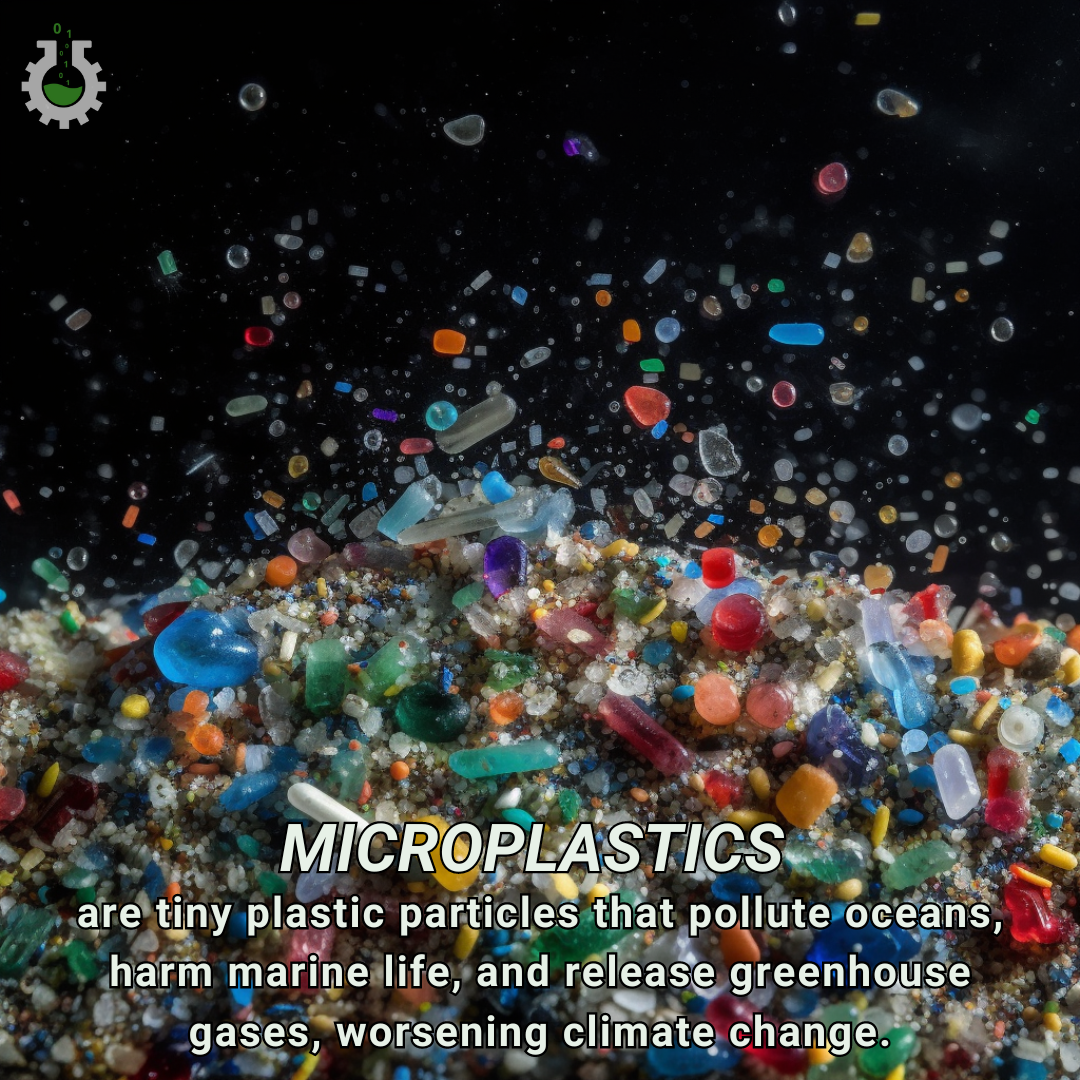June 26, 2024
Climate Change Poster Collection of the Day – Microplastics
Book a Demo
Today’s Climate Change Poster Collection highlights Microplastics, defined as plastic particles less than five millimeters in size, have emerged as a pervasive environmental contaminant, infiltrating ecosystems from the deepest ocean trenches to the highest mountain peaks. While their deleterious effects on marine life and human health have garnered significant attention, their intricate connection to climate change remains an underexplored yet critical issue. The relationship between microplastics and climate change is multifaceted, encompassing the entire lifecycle of plastics, their environmental interactions, and their broader ecological impacts.
The production of plastics is inherently linked to fossil fuels, with approximately 99% of plastics derived from petrochemicals. The extraction, refining, and manufacturing processes are energy-intensive, releasing substantial amounts of greenhouse gases (GHGs) such as carbon dioxide (CO2), methane (CH4), and ethylene into the atmosphere. These emissions contribute significantly to global warming, making the plastic industry a notable contributor to climate change. According to a report by the Center for International Environmental Law (CIEL), the production and incineration of plastics could account for 56 gigatons of CO2 emissions by 2050, equivalent to 10-13% of the entire remaining carbon budget.
Once in the environment, plastics begin to fragment into microplastics through physical, chemical, and biological processes. This degradation process itself can release GHGs. Research has shown that common plastics like polyethylene (PE) and polypropylene (PP) emit methane and ethylene when exposed to sunlight. As these plastics break down, they increase the surface area available for photodegradation, potentially accelerating the release of these potent GHGs. This phenomenon underscores a feedback loop where plastic pollution not only contributes to climate change but is also exacerbated by it.
In marine environments, microplastics pose a significant threat to the carbon sequestration capabilities of the ocean. Phytoplankton, tiny photosynthetic organisms, play a crucial role in the biological carbon pump, a process where CO2 is absorbed from the atmosphere and transported to the deep ocean. When phytoplankton die or are consumed by zooplankton, the carbon they have sequestered sinks to the ocean floor. Microplastics can interfere with this process in several ways. They can be ingested by plankton, reducing their feeding efficiency and reproductive success. Additionally, microplastics can adsorb harmful pollutants, which can then be transferred up the food chain, further stressing marine organisms and ecosystems. Disruption of the biological carbon pump could lead to higher concentrations of CO2 in the atmosphere, exacerbating global warming.
Moreover, microplastics can influence the albedo effect, the reflectivity of Earth’s surface. When microplastics settle on ice and snow, they can darken these surfaces, reducing their ability to reflect sunlight. This increased absorption of heat accelerates the melting of ice and snow, contributing to rising sea levels and the release of stored carbon from thawing permafrost. The Arctic, already warming at twice the rate of the global average, is particularly vulnerable to this effect. The presence of microplastics in such remote and sensitive regions highlights the far-reaching implications of plastic pollution.
The impact of microplastics extends to terrestrial ecosystems as well. Agricultural lands are increasingly contaminated with microplastics through the application of sewage sludge as fertilizer, plastic mulching, and atmospheric deposition. These microplastics can alter soil structure, water retention, and nutrient cycling, affecting plant growth and soil health. Additionally, microplastics can transport soil pollutants and pathogens, posing risks to food safety and human health. The degradation of soil health can also impact carbon sequestration in terrestrial ecosystems, further linking microplastics to climate change.
Addressing the dual challenges of microplastic pollution and climate change requires a comprehensive and integrated approach. Reducing plastic production and consumption is paramount. This can be achieved through policy measures such as bans on single-use plastics, extended producer responsibility, and incentives for sustainable alternatives. Enhancing waste management systems to prevent plastic leakage into the environment is equally important. Innovations in recycling technologies and the development of biodegradable plastics can also play a role in mitigating plastic pollution.
Furthermore, research into the environmental fate and impacts of microplastics is essential to inform policy and management strategies. Public awareness and education campaigns can drive behavioral changes and support for policies aimed at reducing plastic pollution. Collaborative efforts at local, national, and global levels are necessary to address this complex issue.
The connection between microplastics and climate change is a compelling example of the interconnectedness of environmental issues. By understanding and addressing this relationship, we can take meaningful steps toward mitigating both plastic pollution and climate change, ultimately fostering a healthier and more sustainable planet for future generations.
Discover an inspiring collection of climate change poster.



